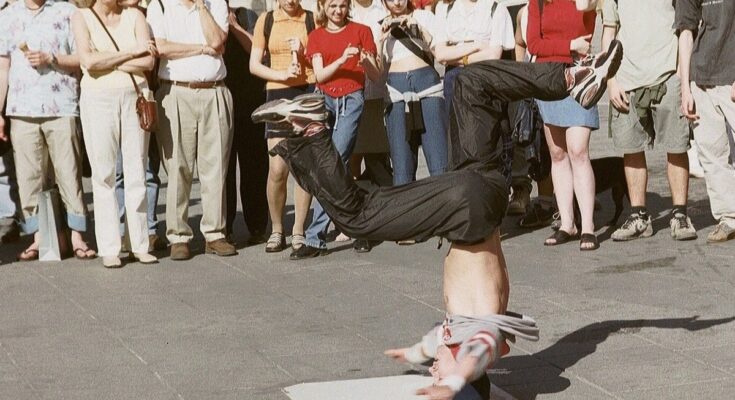When the International Olympic Committee (IOC) approved Paris’s request to add breaking, or breakdancing in this year’s Olympics eyebrows were raised.
It was a controversial decision as many critics said that breakdancing has the potential for subjective judging.
Breakdancing: From Bronx to the Olympics
As Mikhail Batuev, Lecturer in Sport Management at the University of Northumbria explains the origins of breaking are somewhat debatable, although most agree its roots can be traced to 1970s house parties in the Bronx area of New York hosted by DJ Kool Herc, the founder of hip-hop.
Throughout the 1980s the phenomenon garnered international exposure via music videos and movies such as Flashdance (1983), Breakin’ (1984) and Beat Street (1984). This is also when the media started to use the term “breakdancing”. However, breakers never add “dance” on the end, as this term came from outsiders rather than the hip-hop community.
While the idea of testing each other in format-free “cyphers” (when people gather in a circle and somebody freestyles in the middle) has always been fundamental to breakers, the importance and the number of organized breaking competitions has steadily grown with commercialization and codification of the activity.
Breakdancing to attract younger audience in the Olympics
The sport made its successful debut at the 2018 Youth Olympics in Buenos Aires, Argentina, where it topped 1 million viewers, according to NBC Olympics, far outpacing audiences for many other sports.
The Olympics declared it an “outstanding success,” and now both the organizers and the athletes hope to translate that magic to the biggest stage in sports.
Breaking joins other newer sports, including three that were added to the Olympic program for the first time at the 2020 Tokyo Games — surfing, skateboarding and sport climbing.
Adding those sports to the official Olympics roster is an attempt by the International Olympic Committee to reach a younger audience, given that “all four are easy to take up and participants form communities that are very active on social media,” according to the Paris Olympics.
The IOC hopes millions of kids worldwide will be inspired to take up the sports themselves.
Critics
One of the primary criticisms leveled at breakdance as an Olympic sport is the potential for subjective judging.
Unlike sports with clear-cut metrics like time, distance, or points, breakdance relies on judges to evaluate artistic expression, creativity, and technical skill. This subjectivity can lead to controversies and questions about fairness.
Breakdance emerged from urban street culture and has a strong connection to its roots. Critics argue that the highly structured and competitive Olympic environment may dilute the spontaneous and improvisational nature of the dance form.
The pressure to conform to Olympic standards could stifle the creativity and originality that define breakdance.
The Olympic Games primarily focus on elite athletes striving for peak performance. This emphasis might overshadow the inclusive and community-oriented spirit of breakdance.
The dance form has traditionally been accessible to people from diverse backgrounds, and the Olympic spotlight could create a divide between professional breakdancers and the broader community.
Supporters
“I describe breaking as both a sport and performance art”, said Loughborough University’s Professor Claire Warden. “It’s extremely athletic but it’s also performative in that it is artistic.
“There will always be events at the Olympics that look at who can run the fastest, who can swim the fastest, and so on, but I don’t think that we should restrict sports to these types of events.
“There are already sports at the Olympics at the intersection of sport and performance art the same way breaking is, so synchronized swimming would be an example and rhythmic gymnastics.
“What we’re going to see is the very, very best breakers in the entire world. So, that sense of competition is still there,” Warden said.
Batuev agrees: “As in any creative sport, there are inevitable questions about scoring in breaking. Indeed, there is always going to be a substantial degree of subjectivity, but not drastically more than in established Olympic sports like gymnastics, synchronized swimming or figure skating.”
Breakdancing Olympic Sport: When and where
The girls breaking competition runs on August 9 from 4:00 pm Paris time (14:00 GMT) to the end of the day. The last round, the Gold Medal Battle will start at 9:23 pm Paris time (19:23 GMT).
The boys breaking competition runs on August 10 from 4:00 pm Paris time (14:00 GMT) to the end of the day. The last round, the Gold Medal Battle will start at 9:23 pm Paris time (19:23 GMT).
The Olympics breaking competitions will take place at La Concorde in Paris, 5km (3.1 miles) from the Olympic and Paralympic Village.



